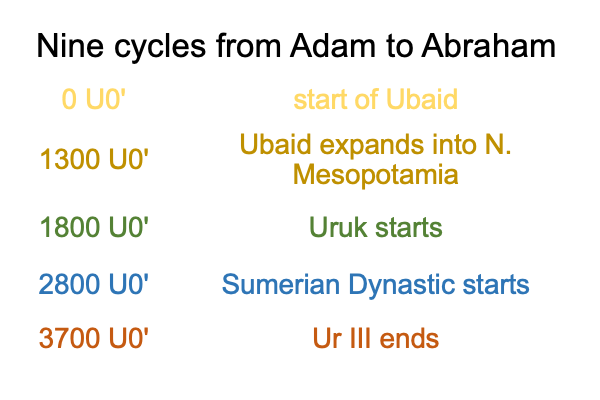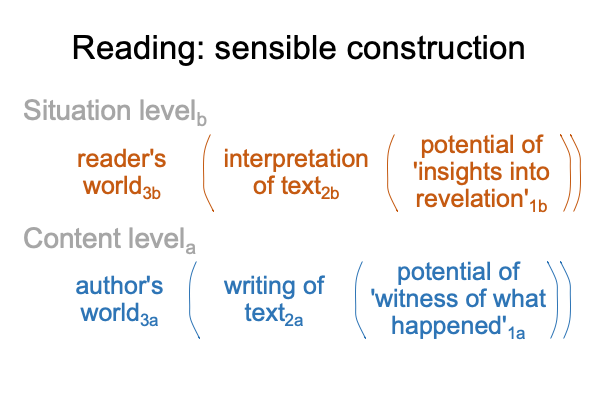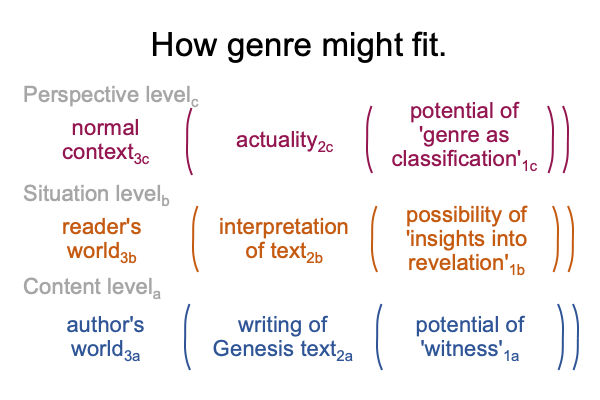Looking at the Book (2015) Genesis: History, Fiction or Neither? (Part 13 of 38)
0043 Hoffmeier mentions a pattern, discerned by David Clines, of sin, divine speech, mitigation and punishment. This pattern is encapsulated in the Story of the Fall. The pattern repeats over and over in Gen 1-11.
I naturalize this pattern as failure, reorientation, paradigm implementation and coping with contradictions inherent in established paradigm.
This describes a cycle.
Does this cycle last for four generations of four generations (that is, around 400 years)?
0044 If so, then here is my guess.
Within each cycle, one genre predominates.
I can call each cycle a genre or a denkstyle.
0045 If this guess makes sense, then there may be nine genres in Gen 1-11, corresponding to nine cycles from the start of the Ubaid to the end of Ur III.
Here is a picture.

0046 There are three cycles between the start of Ubaid and its first expansion into northern Mesopotamia.
One cycle to the start of the Uruk.
Two cycles to right before the Sumerian Dynastic.
Then, three cycles to the twilight of Ur III, when the Sumerian language is no longer spoken.


